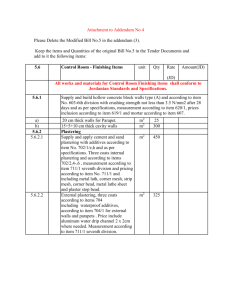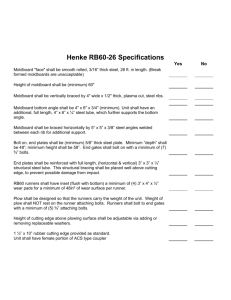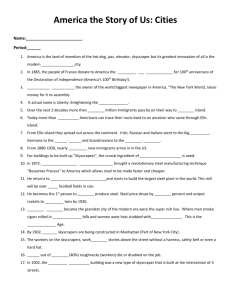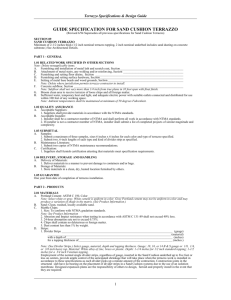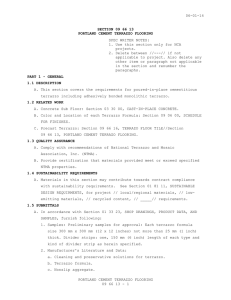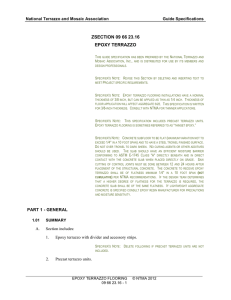Living Room
advertisement
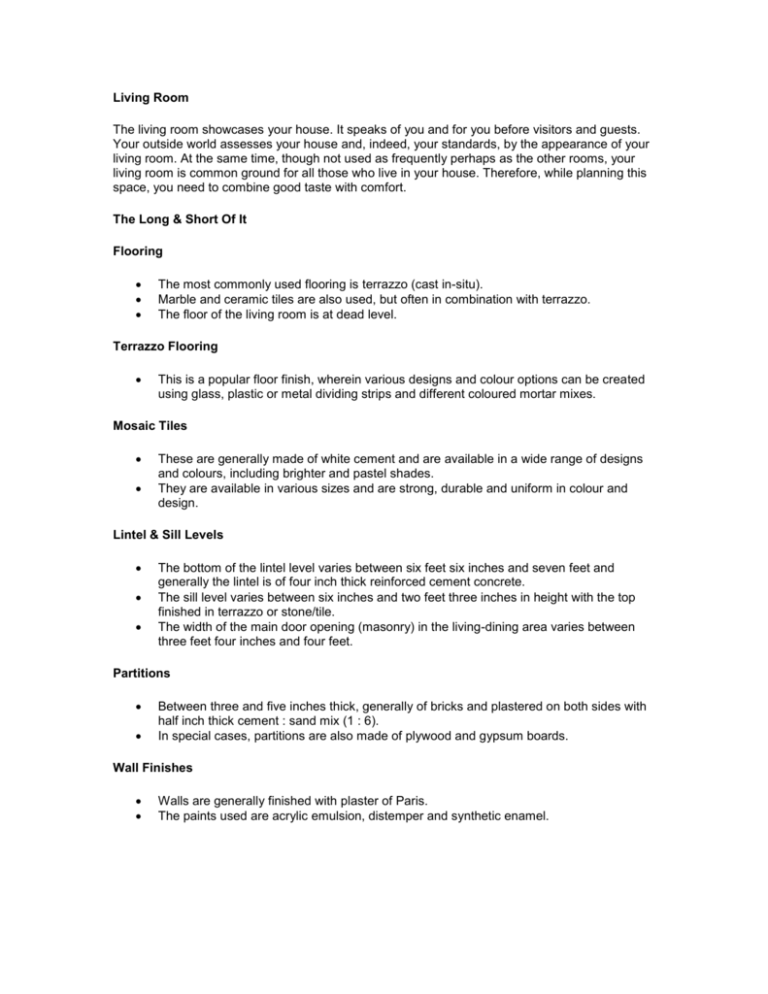
Living Room The living room showcases your house. It speaks of you and for you before visitors and guests. Your outside world assesses your house and, indeed, your standards, by the appearance of your living room. At the same time, though not used as frequently perhaps as the other rooms, your living room is common ground for all those who live in your house. Therefore, while planning this space, you need to combine good taste with comfort. The Long & Short Of It Flooring The most commonly used flooring is terrazzo (cast in-situ). Marble and ceramic tiles are also used, but often in combination with terrazzo. The floor of the living room is at dead level. Terrazzo Flooring This is a popular floor finish, wherein various designs and colour options can be created using glass, plastic or metal dividing strips and different coloured mortar mixes. Mosaic Tiles These are generally made of white cement and are available in a wide range of designs and colours, including brighter and pastel shades. They are available in various sizes and are strong, durable and uniform in colour and design. Lintel & Sill Levels The bottom of the lintel level varies between six feet six inches and seven feet and generally the lintel is of four inch thick reinforced cement concrete. The sill level varies between six inches and two feet three inches in height with the top finished in terrazzo or stone/tile. The width of the main door opening (masonry) in the living-dining area varies between three feet four inches and four feet. Partitions Between three and five inches thick, generally of bricks and plastered on both sides with half inch thick cement : sand mix (1 : 6). In special cases, partitions are also made of plywood and gypsum boards. Wall Finishes Walls are generally finished with plaster of Paris. The paints used are acrylic emulsion, distemper and synthetic enamel. Doors & Windows Door and window frames are generally of wood (Sal), of pressed or mild steel, or aluminum/PVC. Door leaves are generally one to one and a half inch thick for wood and pressed steel. The door shutters/leaves are generally of wood or they are solid core flush doors, hollow flush doors or pressed steel doors. The doors are generally finished with enamel paint, lamination or polish. As a standard practice, four types of windows are used: Wooden frame with wood and/or glass-panelled shutters. Steel frame with glass-panelled steel shutters. Pressed, powder-coated steel frame with glass-panelled steel shutters. Anodised or powder-coated aluminum frame with glass-panelled aluminum shutters. Decorative grills are of mild steel flats (five to six mm thick and 18 to 22 mm wide) or of round and square bars which are 10 to 12 mm thick. Electricals The distribution box (DB) and miniature circuit-breakers (MCB) for the entire house are installed in a dry area close to the main entrance of the flat. The commonly provided electrical points are: o 2 Nos. ceiling fan points. o 4 Nos. light points. o 1 No. 5 amp. power point for refrigerator. o 2 Nos. plug points for audio/video system. o 1 No. cable TV point. o 1 No. telephone point. o All other points for decorative lighting. o Power points for air-conditioner, electric iron, toaster, etc. Types of luminaires used: o Fluorescent. o Incandescent. o Halogen. o Dichroics. o Compact Integrated Fluorescent Lamps. o Non-integrated Fluorescent Lamps. The recommended illumination level is about 250 to 300 lux. To learn more about the important features and aspects which will help enhance the look of your dream home choose and click from the options below.



